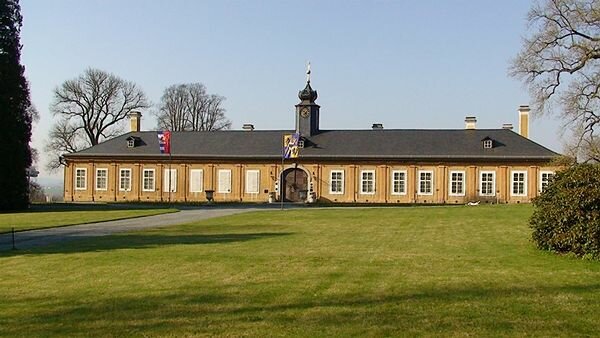History
The history of Kozel Manor House is relatively short. As one of the few classicist buildings in our territory, it is not a reconstruction of an older building, but was built on a so-called “green field”. Thanks to this, you can still see it in its original form.
The Czech word ,,Kozel” means goat. According to legend, the Kozel Manor House owes its name to the pagan custom of the Slavs, who sacrificed a goat to the gods in these places during the spring equinox. They believed, that such a sacrifice would bring them a rich harvest. Originally, however, this manor house was called Waldschloss bei Stiahlau, i.e. Forest Manor house.
The builder of the manor house was Count Jan Vojtěch Czernin from Chudenice, the highest hunter of the Kingdom of Bohemia, the owner of the then Šťáhlavy-Nebílovy manor. He called in the Prague architect Václav Haberditz, who designed the main building of the manor house with a rectangular floor plan and a large courtyard. The building was completed after five years of work, in 1789. In the 1990s, Count Czernin had the manor house expanded by another 4 buildings - the Chapel of the Holy Cross, the Riding Hall, Servants’ Quarters and the Stables. Designs for these buildings were created by Ignác Jan Nepomuk Palliardi. The manor house was built in a pure classicist style, and to this day remains a unique example of a classicist country residence of the nobility from the end of the 18th century in our territory.
The Count, along with his wife Josefina (née Thun-Hohenstein), permanently inhabited the castle in Šťáhlavy. Jan Vojtěch Czernin had built the Kozel Manor House as a hunting lodge, which was used mainly to accommodate its guests during hunts held in the surrounding forests. These used to serve as a game reserve, however, in this period a network of star-shaped paths was built here, which were adapted directly to the needs of the Par force hunts.
Although Jan Vojtěch Czernin was twice married, he died in 1816 without descendants. He bequeathed the Šťáhlavy-Nebílovy manor to his great-nephew, Kristian Waldstein-Wartemberk.
Kristian was not initially too thrilled with his legacy. Not only had he never been to Šťáhlavy before, but the manor was burdened with considerable debts. Eventually, he resorted to Kozel after a quarrel with his father over his planned marriage to Maria Thun - Hohenstein from Ronšperk (today’s Poběžovice, near Domažlice). After they finally received consent on their marriage, they moved to Kozel together, and made it their summer residence. They spent most of the winter season in Vienna. The Kozel Manor House was used in this way until 1832, when Kristian inherited the Mnichovo Hradiště manor from his father. His attention thereby shifted from Šťáhlavy to the dilapidated family seat. Kristian and Maria had 8 descendants, of which 2 were sons. The Kozel Manor House was inherited by his eldest son Arnošt, who continued to live and maintain it with his family.
The Waldstein - Wartemberk family owned Kozel until 1945, when it was confiscated on the basis of the President Beneš decrees. Today it is under the administration of the National Heritage Institute.
